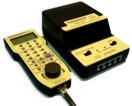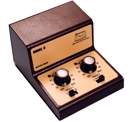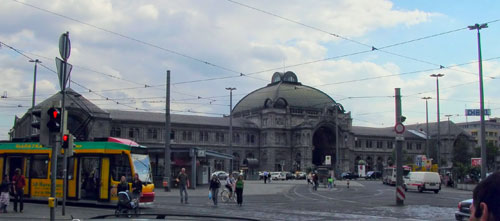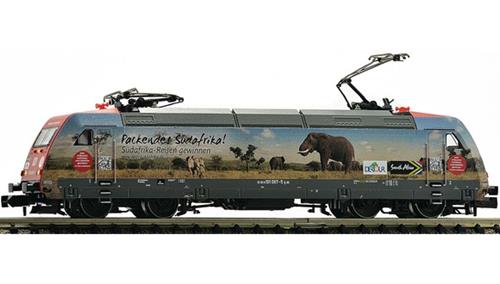|
| OO Scale | N Scale | G Scale | Z Scale | HO Scale | Slot Cars & R⁄C |
| |||||||
|
|||||||
| Home Page | |||||||
| BUY GIFT VOUCHERS | |||||||
| Products | |||||||
| Latest News | |||||||
| RIGHT LINES | |||||||
| Bargains | |||||||
| Downloads | |||||||
| Events | |||||||
| Careers & Jobs | |||||||
| Carriage Services | |||||||
| About Us | |||||||
| Contact Us | |||||||
| Pay Us A Visit | |||||||
| Meet The Staff | |||||||
| Links | |||||||
| SHOPPING BASKET |
Your shopping basket is empty. To add an item, click the "Buy" button
| YOUR ACCOUNT | ||
|
||||
 |
||||
| Prodigy Advance Digital System |
||||
| Cased Controllers |
||||
| Panel Mount Controllers |
||||
| Walkabout Controllers |
||||
| Modules & Transformers |
||||
| Scenics & Accessories |
||||
| Wiring & Electrical Components |
||||
| Tiny Signs | ||||
| Tools | ||||
 |
||||
| RECENTLY VIEWED |
| PK57090A-3 - (S) Traction Tyres 4pcs | ||
| ODAP007 - Austin Princess Late Black | ||
| DA7F-042-040 - KFA Flat Wagon VNH-1 Bogies Tiphook Rail 93389 | ||
| PKET38501-29 - (S) Circuit Board for Battery Pack | ||
| PLSWELD - (PPC-2P) Plastic Weld Glue |
| O Scale | Wargaming | Architectural | Narrow Gauge | Tools+ | ||
A Day Out At... Nurnberg

IAN FOWLER tells us what there is to see at this busy German station.

Every year, the toy trade meet at a variety of strategically important places to show off their new products for the following year. This allows retailers to see what the manufacturers have to offer under one (or usually several) roofs and place their orders for the year ahead. Such orders are vital for brands to gauge demand and allocate adequate production slots to cater for such projections and ensure retailers are not undersupplied in their vital Q3 and Q4 trading periods.
The most important show for Gaugemaster is the Spielwarenmesse in Nurnberg where 2,700 companies from around 60 different countries exhibit their products to around 80,000 visitors. The event, which is huge, uses the entire Nurnberg Messe, which at 14 halls is quite a sight to behold. The reason this event is so important to Gaugemaster is that one of these 14 halls is devoted, almost in its entirety, to model railway products and another to other model and hobby brands. This ensures that we can visit almost every major supplier over the duration of the fair and hold the necessary meetings that determine how the year will shape up for our customers.
At least four Gaugemaster staff attend the fair which usually runs for 6 days. This may sound like a disproportionately long time but three of the staff attend for just three of the day,s with myself doing the full stretch, but with us trading with over 200 different suppliers (of course not all attend) our time is fully booked with meetings during the day and also in more convivial surroundings in the evenings. We are fortunate in regarding many suppliers as friends too and these relationships go back for many, many years. It is important that we remember not to lose the human touch with technology dominating our working lives and habits.
Nurnberg is a beautiful city and is very accessible with direct flights from London Stansted or with one transfer from most other UK airports. Alternatively, you can fly to either Frankfurt and take the ICE Train down to Nurnberg or fly to Munich and get either an ICE train up (or my preference, a loco hauled BR101 service) to the city.
Nurnberg is also where I cut my teeth when it comes to German Railways. Our usual hotel overlooks one end of Nurnberg station, and as the trips to and from the fair necessitate using the U Bahn (subway) from the Hauptbahnhof (main station), it would be quite ungrateful of us to not spend at least some of the little free time we have observing the action in and around the station.
Although not as expert as John when it comes to European railways, I have enjoyed building up my German Railway lexicon over the years and there is a great deal of satisfaction in observing the trains you trade in their natural habitat in 1:1 scale.
The station is vast and occupies a huge footprint. The facilities are excellent with a large number of retail outlets and cafes on within the station. The station also acts as a hub for the entire U Bahn network with every route passing through, underneath the station. Somewhat bizarrely, the services are (or will shortly be) operated by National Express, much to the "delight" of the local people.
The Nurnberg U-Bahn network, showing all five lines intersecting at the central station (Hauptbahnhof). Click for a larger version.
There are 22 platforms within the main station and like many European operations, the timetable is designed with easy, cross-platform connections in mind so as a result trains arrive in tranches, pause for a few minutes and then continue their journeys with passengers efficiently transferring from one train to another. However, it is easy to romanticise (and maybe even lazily stereotype) German operation as "efficient" – my experience is that the services ARE generally more punctual than the UK but not as ruthlessly so as in some other countries. However, the fringe benefits certainly outstrip the UK network with ticket collection generally human (I’ve rarely encountered gates), multi-lingual on board announcements, proper on board catering and a smooth ride. Add to this the common sense approach to health and safety, particularly in the more rural areas, and the experience as an observer of the railways is a very pleasurable one.
In terms of what you might see at Nurnberg Hbf, the answer is passenger trains and lots of them. Freight is diverted away from the main station to free up capacity, and in my many years of visiting the city I can only recall one occasion (on a Sunday night) when I saw a freight train pass through the station. This doesn’t mean there is no freight – in fact there is a big marshalling yard in Nurnberg and a short trip to Furth on the U Bahn or S Bahn will connect you with the huge amount of cargo passing through the region. But that location is for another day.
Train reporting numbers may well be secretive in the UK with only railwaymen and enthusiasts even aware of them, but in Gemany they are positively embraced. Common prefixes are as follows:
- U: Underground services within the city
- S: Metro style overground (Surface) services within the city
- RE: RegioExpress – semi fast regional services
- RB: RegioBahn – local services
- EN: Euro Night Line – Sleeper service between countries
- IC: InterCity services – usually loco hauled (hooray!)
- ICE: Inter City Express services in the hands of the iconic EMUs
- EC: EuroCity Express – cross border loco hauled expresses!
These help you determine what sort of train is coming in and allows you to prepare a good spot for a photo or two!
Although multiple units are becoming more popular, as is splitting and joining trains, it is still amazing how many services are still locomotive hauled with almost all featuring a locomotive at one end and a driving car at the other. There are plenty of bi-level coaches to ride on which certainly feel a bit weird the first time you travel “upstairs” or “downstairs” and many coaches allow you to stand behind the driver and catch his or her view of the line ahead through a window.
I’ve observed many electric locomotives in service in and around Nurnberg station and off the top of my head can recall seeing classes 101, 111, 112, 143, 151, 182, 185, 187 and 189. Most locos and rolling stock are painted in the uniform traffic red scheme but there does seem a good variety of Class 101s (which generally handle the Nurnberg-Inglostadt-Munich expresses) carrying different advertising slogans on their sides. Of course, visiting European trains carry the colours of the country they come from, so you might see some OBB interlopers too.

Fleischmann N Scale model of a BR101 Locomotive with South Africa advertising.
There are normally a pair of Class 218s stabled at one end of the station, which I presume are there on standby for rescue missions and there are always some small shunters pottering about in and around the station.
You can take a look at scheduled Nurnberg arrivals here to give you an idea of what you might see in a typical day.
If you are lucky enough to spend an extended time in the City, there is a really good railway museum, not far from the station which is also recommended. In my opinion, there is enough to do in and around the city to make for a really good mini break particularly around Christmas time when the markets are being held. You can find details of the railway museum here.
My level of expertise is limited and what is written in this report is based on my personal experiences. The internet is a great source of far more detailed information for those wanting to learn more – or better still, why not pick up a copy of Continental Modeller whose English language take on the model railways of the world is always interesting. If any of you have anything to add or contribute about these musings, then do get in touch. It’s great to be able to share our experiences.
Hopefully you’ve found this example of where business and pleasure collide interesting and perhaps it’s even made you think about modelling the railways of Europe? If it has, do not hesitate to contact us. The European model railway scene is huge with thousands of products from a myriad of suppliers to cater for all tastes.
So until next time, Auf Wiedersehen!
Ed's Note - Of course, if you want to look a bit further back at Nurnberg's railway history take a look at my article on Early Bavarian Railways.
|
We are always looking to make improvements to our website to try and improve the quality of your visit. We would welcome your feedback and suggestions, so please do not hesitate to e-mail our webmaster with your comments. Alternatively call us on 01903 884488.
Home Cookies Privacy Statement Terms & Conditions Site Map Site Guide
WEEE Regulations Glossary Careers & Jobs
Tel – +44 (0) 1903 884488 Fax – +44 (0) 1903 884377 E-Mail us – click here
Gaugemaster.com is a trading name of Gaugemaster Controls Ltd.
Registered in England No. 2714470, Registered office:
Gaugemaster House, Ford Road
Arundel, West Sussex, BN18 0BN, United Kingdom
VAT Reg. No. 587 8089 71
Copyright © 2003-2014 Gaugemaster Controls Ltd. All Rights Reserved.

















